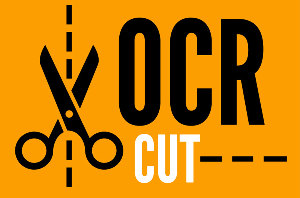Sizeable OCR cut expected in February
Another 0.50% drop in the OCR is expected from the Reserve Bank in February.
Thursday, November 28th 2024, 9:18AM

Westpac and Kiwibank economists think it is more likely than not the central bank will make a drop of this magnitude if the economy and financial conditions evolve in line with its expectations.
Westpac chief economist Kelly Eckhold says after that, uncertainty around the OCR outlook is higher and the easing cycle will be over by mid-year, with the OCR still troughing at 3.5%.
Kiwibank’s view has been tweaked, a little.
Chief economist Jarrod Kerr says yesterday’s move to a 4.25% OCR was just the tip of the iceberg.
More cuts are required and a cash rate below 4% is needed as soon as possible to bring the country out of its two year recession, he says.
“If more proof of the recession and the pain it has inflicted is needed, then KiwiSaver withdrawals is it.”
Hardship withdrawals have spiked from $10 million is January last year to $38 million in October this year.
“The withdrawals are not easy to make as savers need to provide evidence they are suffering significant financial hardship.”
Kerr says significant hardship is a direct impact of the Reserve Bank’s restrictive monetary policy settings.
Cut needed for borrowers
Yesterday’s drop in the OCR might not be as big a thrill for mortgages borrowers as what it looks like, Adrian Orr, Reserve Bank governor says.
“It’s not a big decline,” he says.
The RBNZ expects the average interest rate banks receive for all their mortgages on issue to fall from 6.4% to only 5.8% in a year.
That might be the outlook, but Leigh Hodgetts, Finance and Mortgage Advisers Association of New Zealand (FAMNZ) country manager says New Zealand needed this cut as many borrowers are doing it tough.
“Many Kiwis are on variable rates now and will be looking to transition to a fixed rate again after three consecutive drops.”
Those moving to fixed rates could join the stampede to six-month terms.
At the beginning of this month Reserve Bank figures showed more than half of the country’s mortgages were due to have their interest rate reset within six months. Up to the end of September show that the stock of existing mortgages stood at nearly $364.5 billion.
Mortgage borrowers started gravitating to six-month fixed terms at the beginning of the year. During September 33.4% of the $4.638 billion worth of new mortgages taken up by owner-occupiers were for a six-month term. The year before that figure stood at 5.3%.
Hodgetts advice to those thinking of transitioning to a fixed rate is to seek the advice of a mortgage adviser to ensure they fix for the right term.
“There is a high likelihood that rates will fall further next year so borrowers must choose a term that will suit their individual circumstances. Good advice is essential.”
Global uncertainty tempers enthusiasm
The RBNZ is expecting economic growth to recover next year as lower interest rates encourage investment and other spending.
Employment growth is expected to remain weak until mid-2025 and, for some, financial stress will take time to ease.
However, global economic growth is expected to remain subdued in the near term, while geopolitical conditions and policy uncertainty could put a spanner in the works by contributing to increased economic and inflation volatility over the medium term.
Investors believe the tax cuts US President-elect Donald Trump has promised will result in the country’s books sinking further into the red.
Trump’s tariff threats have also introduced risk, which investors have priced into longer-term assets.
Because of this Orr says borrowers’ “enthusiasm may be tempered a bit, now that they’ve seen other global influences going on”.
| « Banks rush to cut rates after RBNZ slashes OCR 50bp to 4.25% | Vincent Capital adds a South Island BDM » |
Special Offers
Comments from our readers
No comments yet
Sign In to add your comment
| Printable version | Email to a friend |



